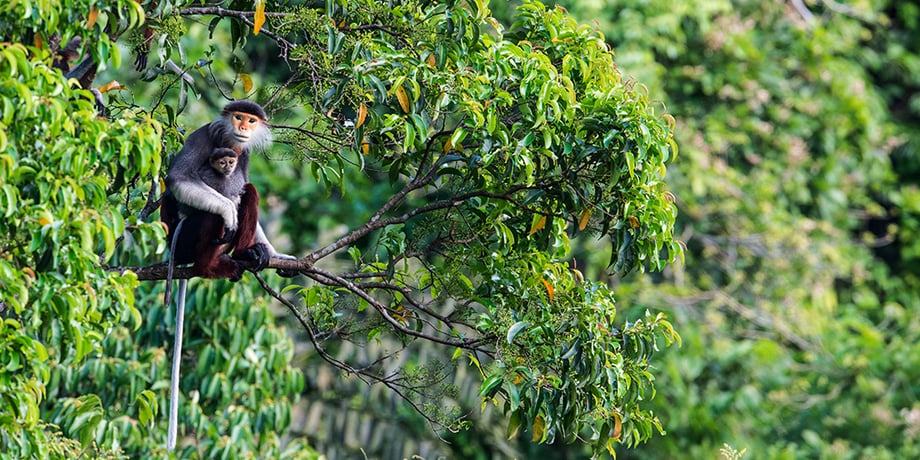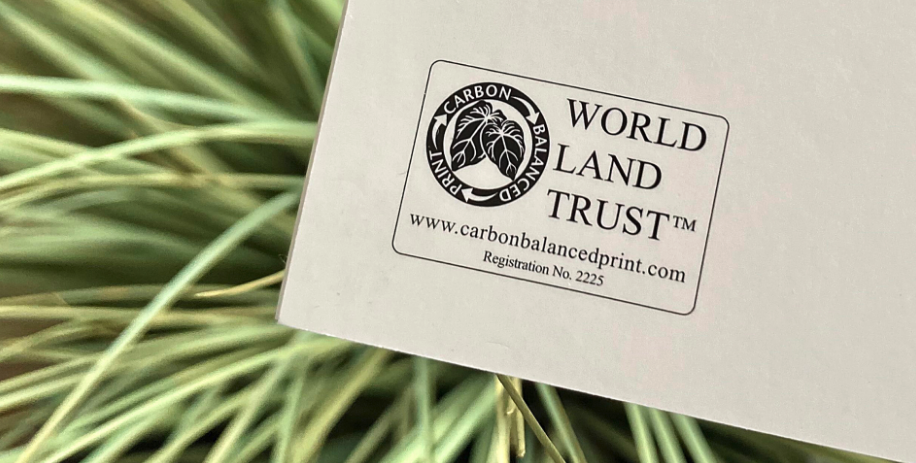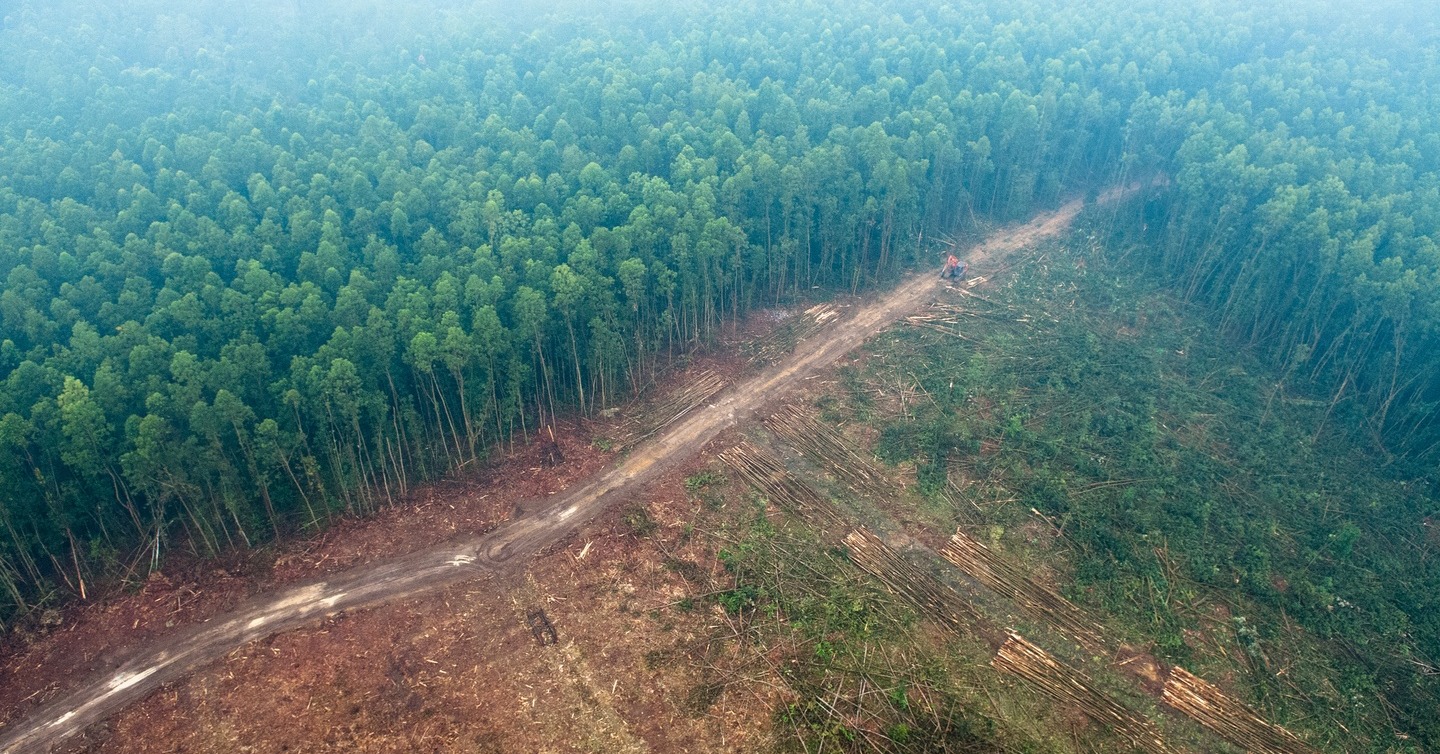Sustainability is a hot topic, and we see a lot of jargon thrown around by companies claiming to be “green”. But what does it even mean?
Sustainability chatter can be a bit of a minefield to navigate, but with so many people putting sustainable initiatives at the top of their priority list when making a purchase, it’s more important now than ever that we get a handle on the terminology we’re using to talk about topics relating to the environment and our impact upon it.
That’s what this glossary is for. We’ve compiled a list of key terms we see often and provided definitions for each, to provide a bit more transparency and clarity on what they actually mean.
Biodegradable
In the push for companies to adopt environmentally-friendly practices, “biodegradable” is a term we now see a lot on product packaging.
If a product or its packaging is “biodegradable”, it means it can be broken down by microorganisms and bacteria that occur naturally in the environment.
Organic waste, such as food and plants, is biodegradable, as is most paper waste.
Significant steps have been made to produce biodegradable plastics, which are now being used across a variety of sectors and industries, including in food packaging. These plastics take between three and six months to decompose — significantly less time than other plastic products.
However, biodegradable plastics still come with a down-side. They’re made from oil - a fossil fuel - so even though they’re great for post-consumer peace of mind, they’re unfortunately still linked to significant pollution through their production due to the need for fossil fuel extraction.
There’s also a risk that they won’t degrade at all. Biodegradable plastics are created in a lab and tested under controlled conditions — something which the natural environment doesn’t have. If these materials aren’t handled correctly post-consumption, they pose the same risks to the environment as other, non-biodegradable products.
That’s why it’s so important to know how to properly dispose of your waste materials, even if they are biodegradable.
Biodiversity
Biodiversity refers to all of the different kinds of life you might find in a certain area, including animals, plants, fungi, and microorganisms, each of which will contribute to the sustainability of their habitat.
Having a high level of biodiversity (i.e. lots of different species) in one area is a good thing. Each species and organism is connected and works collectively to maintain balance and support the ecosystem. Not only this, but on a broader scale, biodiversity protects against climate change and provides many of the things humans need to survive.
Carbon emissions, pollution, and the destruction of natural habitats are some of the things that pose a risk to biodiversity.
At B&B Press, we choose to offset our carbon emissions via our partnership with the World Land Trust. This allows us to contribute to vital conservation projects that protect and restore natural habitats, balancing out the emissions we can’t eliminate from our print production processes and supporting biodiversity within conservation areas.

Carbon Footprint
A carbon footprint is an individual’s or company's total carbon dioxide emissions. This harms the environment, causing climate change and putting ecosystems at risk.
The less unnecessary carbon dioxide generated from our actions, the better.
Unfortunately, there are very few processes that don’t generate carbon dioxide emissions. Manufacturing and production are two of the heaviest contributors towards a company’s carbon footprint, which is why we’re now seeing a lot of companies taking active measures to reduce the negative impact of their manufacturing processes.
Carbon-Balanced Print
Carbon-Balanced Print is a scheme which allows companies to offset the unavoidable carbon emissions of their printed materials.
This scheme funds the World Land Trust to protect our biologically significant, and threatened, rainforests.
Businesses across all sectors invest in Carbon-Balanced Paper for use in their offices, but not everyone chooses to invest in Carbon-Balanced Print.
When you choose a Carbon-Balanced Printer, you can rest assured that every effort has been made to reduce dangerous emissions from the printing process. Not only are printing emissions thoughtfully offset, but any emissions generated from the production of the paper being printed on are offset too.

Carbon-Balanced Print offers one of the most sustainable print solutions available, and we’re proud to be a certified Carbon-Balanced Printer.
Want to learn more about the benefits of Carbon-Balanced Print? Read about a sustainable Carbon-Balanced Print solution we recently delivered for the University of Salford.
Carbon-Balancing
As with Carbon-Balanced Print, carbon balancing is an action that can be taken by companies across all sectors to responsibly offset their carbon emissions in order to reduce their carbon footprint and the negative impact their business practices have on the environment.
When a company manages to offset the same amount of carbon emissions as it produces, it’s then considered to be “carbon neutral”.
Carbon neutral is a registered trademark of Natural Capital Partners. Carbon-balanced paper and print is a registered trademark of World Land Trust.
Carbon Sinks
A carbon sink is any system that absorbs more carbon than it emits, such as forests, soil and oceans. This helps to regulate the planet’s temperature and mitigate against climate change.
According to the World Economic Forum, natural carbon sinks absorb roughly half of the world’s atmospheric carbon dioxide, which is why it’s vital for us to take necessary steps to protect them as much as possible.
Closed-Loop
A closed-loop cycle occurs when products are materials are either recycled to create new products, or returned to their original state.
This cycle protects products from ending up in landfill, thereby protecting the environment from toxic emissions like methane and carbon dioxide.
Unfortunately, the way we as a society currently recycle products isn’t quite creating a closed-loop system. As a process, it’s quite energy-intensive, and only a small percentage of products are fully recyclable in the first place.
To achieve a complete closed-loop system, it’s up to companies to design their products with renewable resources and compostable materials. Smaller efforts, like promoting recycling initiatives with customers, can also lead to big change and positive impacts.
At B&B Press, we’re getting behind initiatives such as Sheffield Action On Plastic, amongst others, to promote recycling and sustainable practices in our local area.
Circular Economy
A circular economy is a system that aims to use resources more efficiently. A closed-loop system is a type of circular economy.
There are three key principles of a circular economy:
- Eliminate waste and pollution
- Circulate/re-use products and materials
- Regenerate nature
Composting
Composting involves disposing of natural and organic products in a way that allows them to biodegrade and break down naturally, until they become a healthy fertiliser or new soil rich with microorganisms. This process usually takes a few months.
Products such as paper and food are compostable. A few examples of non-compostable products are plastics, glass and metal, which should be recycled where possible.
In theory, packaging labelled as compostable is made from vegetable matter like potato or cornstarch, which breaks down naturally.
Conservation
Conversation is the careful management and protection of Earth’s natural resources, including air, minerals, plants, soil, water, and wildlife, and the habitats and ecosystems they thrive in.
It involves maintaining biodiversity and the functions of the environment, such as nutrient cycling, to ensure they can remain for future generations.
Deforestation
Deforestation is the deliberate removal of forests and wooded areas — usually so the land can be used for farming or housing. The most concentrated deforestation occurs in tropical rainforests.
There are several organisations that work hard to protect against deforestation. One organisation prevalent in this area is the World Land Trust, which we are proud to partner with and support.
Through our partnership and efforts as a Carbon-Balanced printer, we’ve supported the World Land Trust in protecting and restoring over 186 acres of endangered tropical forests.
Learn more about our conservation efforts with our Impact Report.

Eco-Friendly
Eco-friendly is a broad label used to refer to practices and products that don’t cause harm to the environment.
Unlike "organic", which must be approved by the USDA, “eco-friendly” is non-specific, and because of this is associated with greenwashing.
Brands are allowed to label their products “eco-friendly” without explaining exactly what makes them so. So, next time you see a brand making this claim, it’s worth thinking about what steps they’ve actually taken (if any) to earn it.
Energy-Efficient
Energy efficiency involves using less energy to achieve the same result, or producing more by using the same amount of energy.
Processes that are energy-efficient help to reduce greenhouse gas emissions and mitigate climate change. As a bonus for the business, being energy-efficient also helps to reduce energy bills.
Forest Stewardship Council (FSC)
The Forest Stewardship Council is an international non-profit organisation established in 1993 to promote sustainable forestry management.
The FSC sets standards on forest products to be environmentally appropriate, socially beneficial and economically viable, along with certifying and labelling them as eco-friendly.
Greenwashing
Greenwashing is something that’s done by companies to make consumers believe their processes and products are more environmentally-friendly than they actually are.
It happens when companies make false or misleading claims about their environmental impact, use vague terminology, misleading labels and buzzwords, or selective emphasis to highlight all of the good things about their product while ignoring the bad.
Greenwashing can mislead customers into investing in products or brands that don’t truly align with their values. It can also harm consumer trust and be a barrier to true sustainability.
LED
In an effort to make operations more energy-efficient, a lot of companies (including us!) have made the choice to switch to LED lighting.
Whilst it’s slightly more expensive than alternatives, LED lighting lasts longer, is more durable, and uses 90% less energy than incandescent lighting. It’s also safer, as LED bulbs don’t generate as much heat, and it’s more practical, as it provides instant light when powered on.
We also use LED technology in our LED UV litho printing press, which provides a low-energy, high-quality printing method that uses light instead of heat to fast-dry the inks.
Linear Economy
A linear economy is the opposite of a circular economy. Rather than considering how a material might be recycled or repurposed, in a linear economy, resources are extracted, used to create products, and then disposed of as waste after their initial use.
As a system, a linear economy is very wasteful and results in the depletion of finite resources and an increase in pollution.
Linear economy systems are not sustainable, and it’s important that we each do everything we can to reformulate them into circular economy systems.
Net Zero
Net zero refers to the balance between the amount of greenhouse gas produced and the amount removed from the atmosphere.
We reach net zero when the amount we add is no more than the amount taken away. For the UK, the aim is to bring all greenhouse gas emissions to net zero by 2050.
Microplastics
Microplastics are the microscopic remnants of plastics that break down in our landfills and oceans.
Microplastics can be found in common items that we use every day, including water bottles, packaging, synthetic clothing, and tyres. They cause harm to wildlife, and pose a risk to human health when they contaminate our water systems.
Microplastics are a growing concern that can only be overcome when we make every effort to reduce plastic use, switch to alternative biodegradable materials, and dispose of any plastic waste responsibly.
Permaculture
Permaculture is a concept that involves working with nature, rather than against it. It refers to the development of sustainable and self-sufficient agricultural ecosystems that allow people to adopt sustainable living practices.
It highlights a more mindful approach to gardening, living, cooking, and connection with nature and others.
Permaculture living can be done anywhere, from cities to the seaside, and can be harnessed through gardening, agriculture, and foraging.
Polylactic Acid (PLA)
PLA is a compostable plastic made from plant-based materials — most commonly cornstarch.
PLA is used to create products such as food containers, cups, trays, utensils, and cutlery, and can be used to produce biodegradable fabrics for clothing.
Rewilding
Rewilding is all about restoring ecosystems in the wild so that nature can sustain itself. It involves restoring natural habitats, reintroducing missing species, and minimising human intervention to allow natural processes and wildlife to shape and reclaim the landscape.
Rewilding is a progressive approach to environmental conservation that encourages people to reconnect with nature.
Sustainable/Sustainability
When we talk about sustainability, we’re usually thinking about the environment, but it can be used to refer to other things too, like the economy, or our social relationships.
When something is sustainable, it’s set up in such a way as to meet our needs not just now, but in the long-term, too.
Sustainability has been a hot topic for a few years now, and because of this, we see a lot of companies claiming to care about sustainability without being able to provide it in their actions or investments.
We’re not like the others. We don’t just talk about “being more sustainable” — we make change happen. When you work with us, you’re partnering with a company that values the future as much as you do, and is taking purposeful steps to protect it. Here’s how.
And we can support you in your sustainability efforts, too. Read a recent case study to learn more.
Triple Bottom Line
The Triple Bottom Line is a framework that helps companies with their sustainability planning by considering their performance in three key areas: people, planet, and profit.
Adopting this framework has allowed us to make important decisions about where we should focus investment so that we can make sure we’re a sustainable business through practice, not just through promise.
- We’re invested in our people, supporting them to support the planet by building carbon literacy awareness and promoting action.
- We’re invested in purposeful partnerships, collaborating with like-minded businesses that align with our values. By forming strategic partnerships, we can amplify our impact, driving positive change not just within our operations, but across the entire industry.
And we’re invested in protecting the planet through our sustainable printing practices, our status as a Carbon-Balanced Printer, and our partnership with conservation organisations such as the World Land Trust.
Wishcycling
Wishcycling is when people dispose of waste in recycling bins in the hopes of it being recycled, when in reality it can’t be. While it’s often done with good intentions, it often causes more harm than good.
World Land Trust (WLT)
World Land Trust is an international conservation charity that protects the world’s most biologically significant and threatened habitats acre by acre.
By printing with us, you’ll be supporting WLT through carbon-balanced printing. You'll also receive a certificate to state the amount of CO2 balanced and the area of land protected as a result of your positive action.
Zero Waste
Zero waste is a principle that’s centred around keeping waste out of landfill. Aligned with the circular economy system, zero waste is a goal for individuals to reduce waste and to be less wasteful generally as consumers.
Really Great Print is Sustainable
Being environmentally friendly won't impact your print quality and can significantly benefit your business.
But first, you need to know what to look out for. This checklist is the perfect companion for print buyers and marketing professionals.
We've made it easier to decide what you need from your print to ensure you make the best decision possible for the planet and your business.

